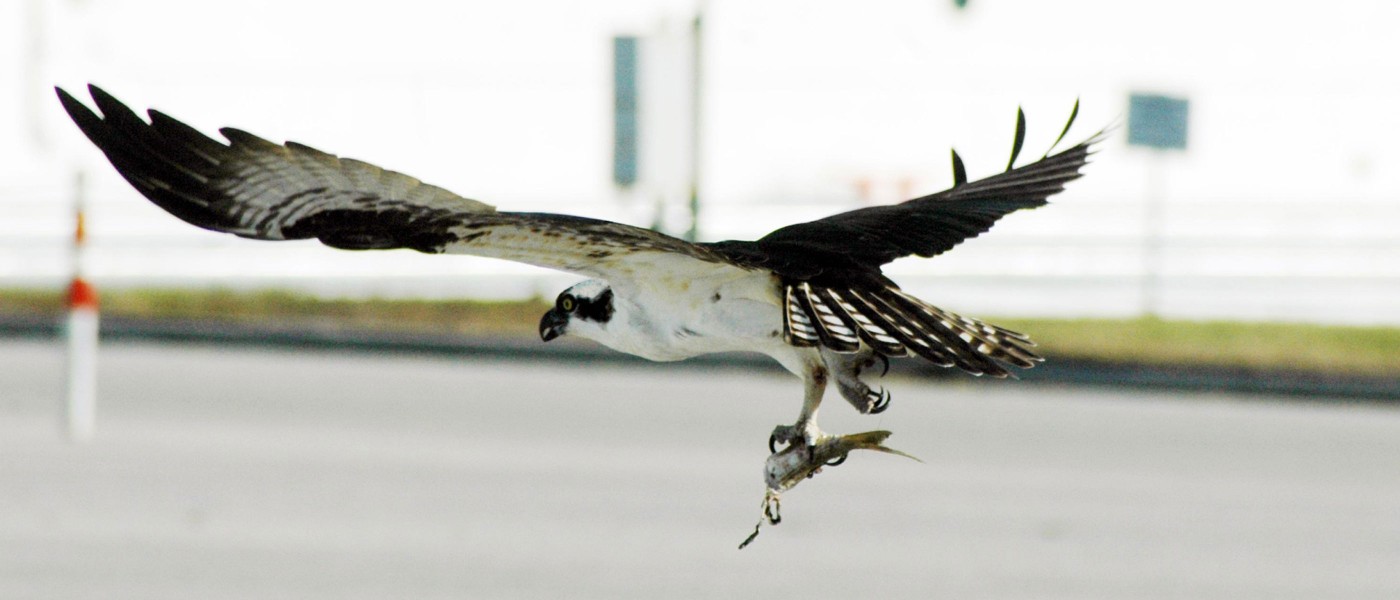Birds of Brooklyn: Osprey
When you think of New York City birds, a large fish-eating raptor like the osprey might not be the first to enter your mind. But ospreys do indeed make their summer homes in the New York metro area, with a respectable population living in Brooklyn and Long Island. Last month, my fellow New York birders and I were all taking bets on the date and spot for the first osprey siting of the year. Everyone loves to watch this bird because of its power, size, and fishing ability.
In March, each of us scoured the waters around NYC and Long Island. There were scattered reports, but no confirmation. Then on March 21, a Monday, came concrete evidence from the Oceanside Marine Nature Center’s osprey cam. The center, in Hempstead, is closed on Mondays, but the camera showed two osprey on their nesting platform, arranging sticks for the 2016 breeding season.
Years ago there were as many as 1,000 osprey pairs nesting on or near the East Coast from New York to Boston. That number dropped to about 150 during the 1960s after years of widespread DDT use. Osprey, like other birds of prey, are vulnerable to DDT’s damaging effect on eggshells. Since the early 1970s, when DDT was banned, the population has rebounded, and now the osprey has again become a somewhat common bird in the area.
In addition to the DDT ban, the construction of nesting platforms has greatly helped in this recovery. Ospreys usually mate for life and return to the same nesting platform year after year. Three eggs are laid early in the season. Incubation takes about 40 days, and both parents take shifts sitting. The young fledge in about ten weeks, and then they are on their own. It takes about three years for them to reach sexual maturity. Ospreys migrate and mostly spend the winter in South America, either on the coast of Venezuela or Colombia, or sometimes in the interior of these countries.
The osprey eats live fish that it catches from the bays, rivers, and ocean. Its Latin name, Pandion haliaetus, means fish eagle, and it fishes by hovering over open water and then plunging talons-first into the water. Once a fish is caught, the bird arranges it headfirst in its talons and flies off to a convenient perch for a meal.
Ospreys are great fun to observe, and you can do so in the city if you go to the right place. There are several osprey platforms in Brooklyn—try the Marine Park Nature Center on Avenue U and also at the Bush Terminal Park in Sunset Park. The most viewable and reliable osprey nesting platforms in the city can be found at Jamaica Bay Wildlife Refuge, in Queens, near the west pond. One pair there has been thrilling birders for years. Looking forward, the future is bright for the osprey and for those of us who enjoy observing them.
The Birds of Brooklyn series looks at some of the most familiar and fascinating birds that call Kings County their habitat.


